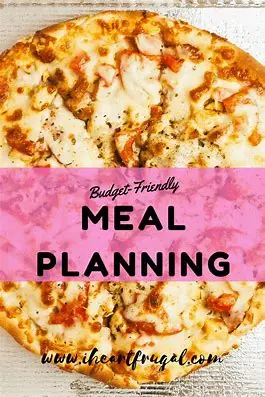
Introduction:
In today’s fast-paced world, it’s easy to get caught up in the whirlwind of expenses, especially when it comes to food. But fret not! Crafting a budget-friendly meal plan doesn’t mean sacrificing flavor or nutrition. With a little creativity and some smart strategies, you can enjoy delicious meals without breaking the bank. In this blog post, we’ll guide you through the art of creating a budget-friendly meal plan that’s not only easy on your wallet but also leaves your taste buds satisfied.
Assess Your Resources:

Before diving into meal planning, it’s essential to take stock of your resources. This includes both your financial budget and the ingredients you already have in your pantry. Knowing what you have on hand can help you build meals around those items and reduce waste.
Set a Realistic Budget:
Determine how much you can comfortably allocate to your weekly or monthly food budget. Be realistic about your financial situation, and don’t forget to account for any special occasions or events that might require additional spending.
Embrace Seasonal and Local Produce:

Seasonal fruits and vegetables are not only fresher but also more affordable. Visit your local farmers’ market or grocery store to find the best deals on produce that’s in season. These ingredients can be the backbone of your budget-friendly meals.
Plan Simple, Versatile Meals:
Simplicity is key to keeping your meal plan budget-friendly. Opt for recipes that use minimal ingredients and can be repurposed into multiple meals. For instance, a batch of homemade tomato sauce can be used for pasta, pizza, or as a base for soups and stews.
READ MORE
DIY: Natural Home Remedies for Everyday Ailments
Using Essential Oils For Anxiety Relief
Bulk Buying and Meal Prep:
Buying pantry staples in bulk can save you money in the long run. Look for discounts on rice, pasta, canned goods, and grains. Additionally, invest some time in meal prep. Cook large batches of grains, proteins, and veggies over the weekend, and freeze them in portions. This way, you’ll always have ready-to-go ingredients for quick and affordable meals during the week.
Reduce Meat Consumption:

Meat can be a significant expense in your meal plan. Consider incorporating more plant-based protein sources like beans, lentils, tofu, and eggs into your diet. Not only are these options budget-friendly, but they are also healthier and environmentally friendly.
Leftovers Are Your Friends:
Don’t underestimate the power of leftovers. When planning your meals, intentionally cook more than you need for one meal. Leftovers can be transformed into delicious lunches or dinners the next day, saving you time and money.
Stay Mindful of Dining Out:

While dining out can be a treat, it can also quickly drain your food budget. Reserve restaurant visits for special occasions, and when you do eat out, choose budget-friendly options or look for discounts and deals.
Track Your Spending:
Keep a close eye on your food expenses to ensure you’re staying within your budget. There are numerous apps and tools available that can help you track your spending and make adjustments if necessary.
Conclusion:
Creating a budget-friendly meal plan doesn’t mean sacrificing taste or nutrition. By carefully assessing your resources, setting a realistic budget, and making smart choices when it comes to ingredients and cooking methods, you can enjoy delicious and wallet-friendly meals. With a little planning and creativity, you’ll find that eating on a budget can be both satisfying and sustainable. So, get ready to embark on a culinary journey that’s as good for your wallet as it is for your taste buds. Happy cooking!


